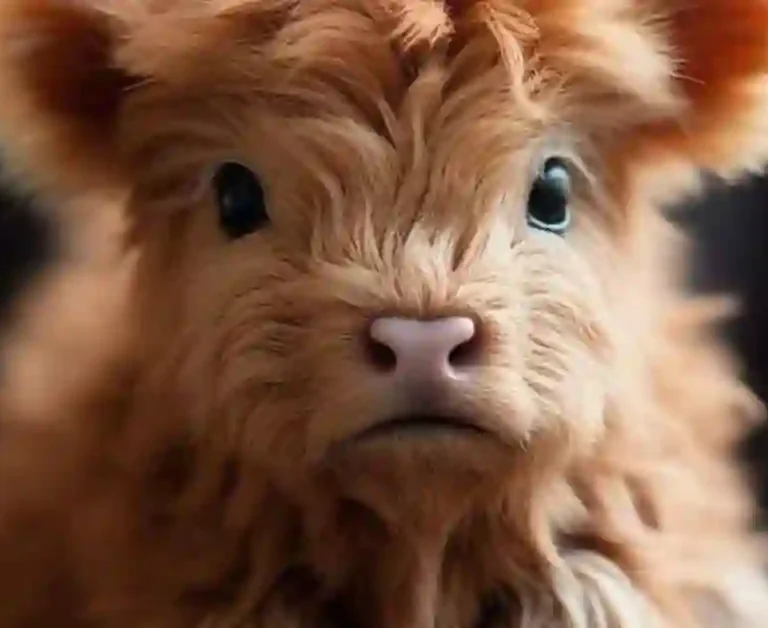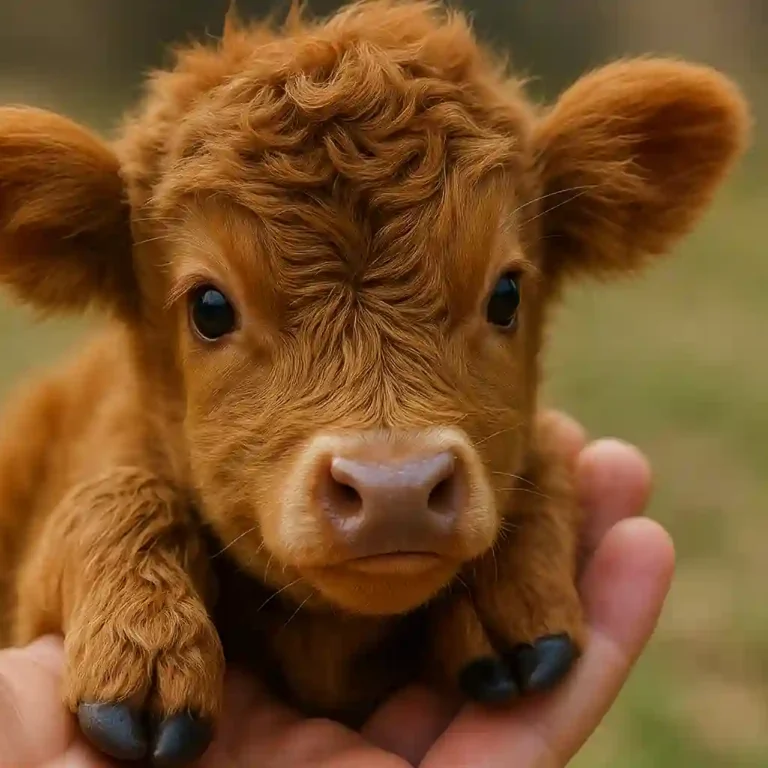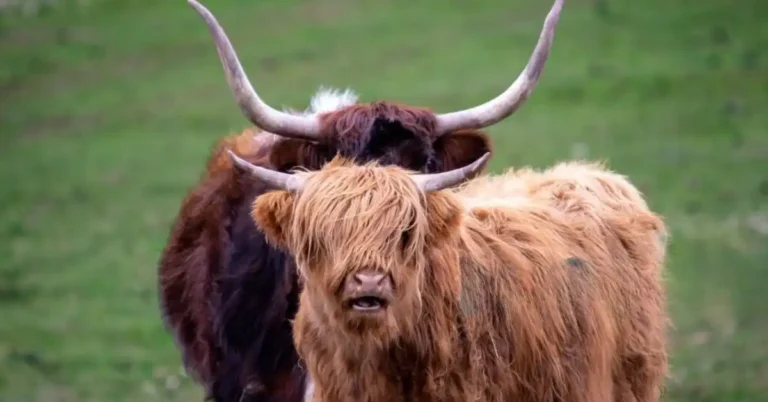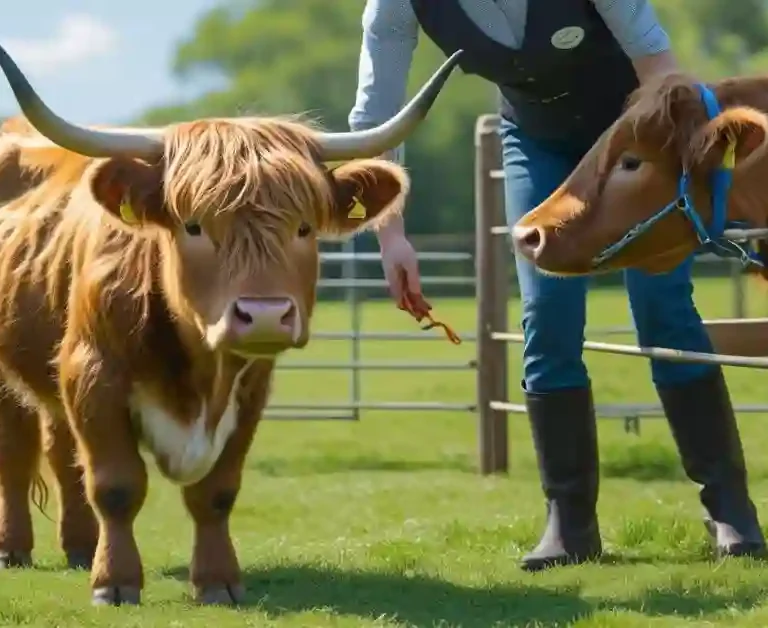Teacup Mini Highland Cows , Adorable, Hardy & Easy to Raise
Teacup mini Highland cows have captured the hearts of many Americans with their adorable appearance, manageable size, and charming personalities.
These pint-sized bovines offer a unique opportunity for small-scale farmers, homesteaders, and even some suburban enthusiasts to experience the joy of raising cattle without requiring vast acreage.
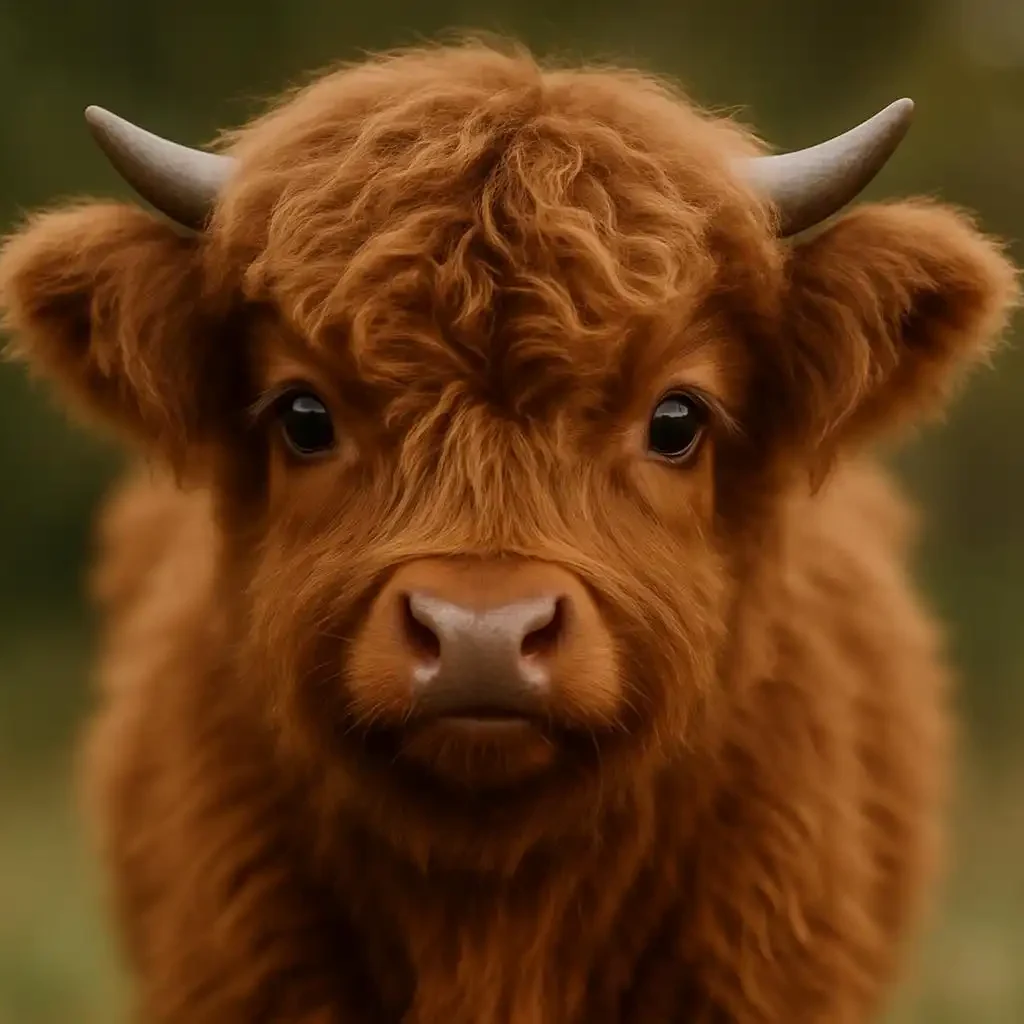
In this comprehensive guide, we’ll explore everything you need to know about teacup mini highland cows from understanding what they truly are and their distinctive characteristics to their care requirements, costs, and legal considerations specific to US owners.
Whether you’re considering adding one of these fluffy companions to your property or simply curious about this increasingly popular mini livestock trend, this article provides the essential information you need to make informed decisions.
What Are Teacup Mini Highland Cows? Understanding the Breed
The term “teacup mini highland cow” has gained significant popularity in recent years, particularly on social media platforms where images of these adorable animals frequently go viral. However, understanding what truly constitutes a teacup mini highland cow requires some clarification.
The Reality Behind the Terminology
Teacup mini highland cows are smaller versions of the traditional Scottish Highland cattle breed, known for their distinctive long horns and shaggy double coat.
These miniature versions typically stand between 36 to 48 inches tall at the shoulder and weigh between 500 to 800 pounds when fully grown. While significantly smaller than standard Highland cattle (which can weigh 1,100-1,800 pounds), it’s important to understand that the term “teacup” can sometimes be misleading.
According to breeding experts at Elm Hollow Farm, “There is no such thing as a miniature Highland, and certainly not a micro-miniature one.” This perspective highlights an important consideration: many animals marketed as “teacup” mini highland cows may actually be:
- Young calves being misrepresented as mature animals
- Stunted animals resulting from poor nutrition or health issues
- Cross-breeds with naturally smaller cattle breeds like Dexters
- Selectively bred smaller Highlands, which still carry standard Highland genetics
Ethical Breeding Considerations
Responsible breeders focus on maintaining the health, temperament, and distinctive characteristics of Highland cattle while selectively breeding for smaller size over multiple generations.
This approach prioritizes animal welfare while working toward a genuinely smaller Highland cow that retains the breed’s positive attributes. Reputable breeders will be transparent about their breeding program, provide detailed health records, and offer realistic expectations about the animal’s adult size and care requirements.
Physical Characteristics of Teacup Mini Cows
Teacup mini highland cows inherit many of the distinctive physical traits that make their larger counterparts so recognizable, just in a more compact package.
Understanding these characteristics helps potential owners identify healthy specimens and appreciate what makes these animals unique.

Size Specifications
While standard Highland cattle typically stand 48-60 inches tall at the shoulder and weigh 1,100-1,800 pounds, teacup mini highland cows are considerably smaller:

| Measurement | Teacup Mini Highland | Standard Highland | Comparison |
|---|---|---|---|
| Height (at shoulder) | 36-48 inches | 48-60+ inches | 25-40% smaller |
| Weight | 500-800 pounds | 1,100-1,800 pounds | 45-70% lighter |
| Body Length | 48-60 inches | 70-85 inches | 30-40% shorter |
| Calves (birth weight) | 25-45 pounds | 60-80 pounds | 40-60% lighter |
It’s worth noting that despite their smaller stature, teacup mini highland cows still require substantial space and cannot be kept as indoor pets, contrary to some misleading marketing claims.
Distinctive Coat and Coloration
One of the most appealing features of teacup mini highland cows is their luxurious double coat, which consists of:
- A soft, downy undercoat that provides excellent insulation
- A longer, coarser outer coat that can reach up to 13 inches in length
This distinctive coat comes in various colors, including:
- Red (ranging from light golden to deep auburn)
- Black
- Brindle (tiger-striped pattern)
- Dun (grayish-brown)
- White or cream
- Silver (rare)
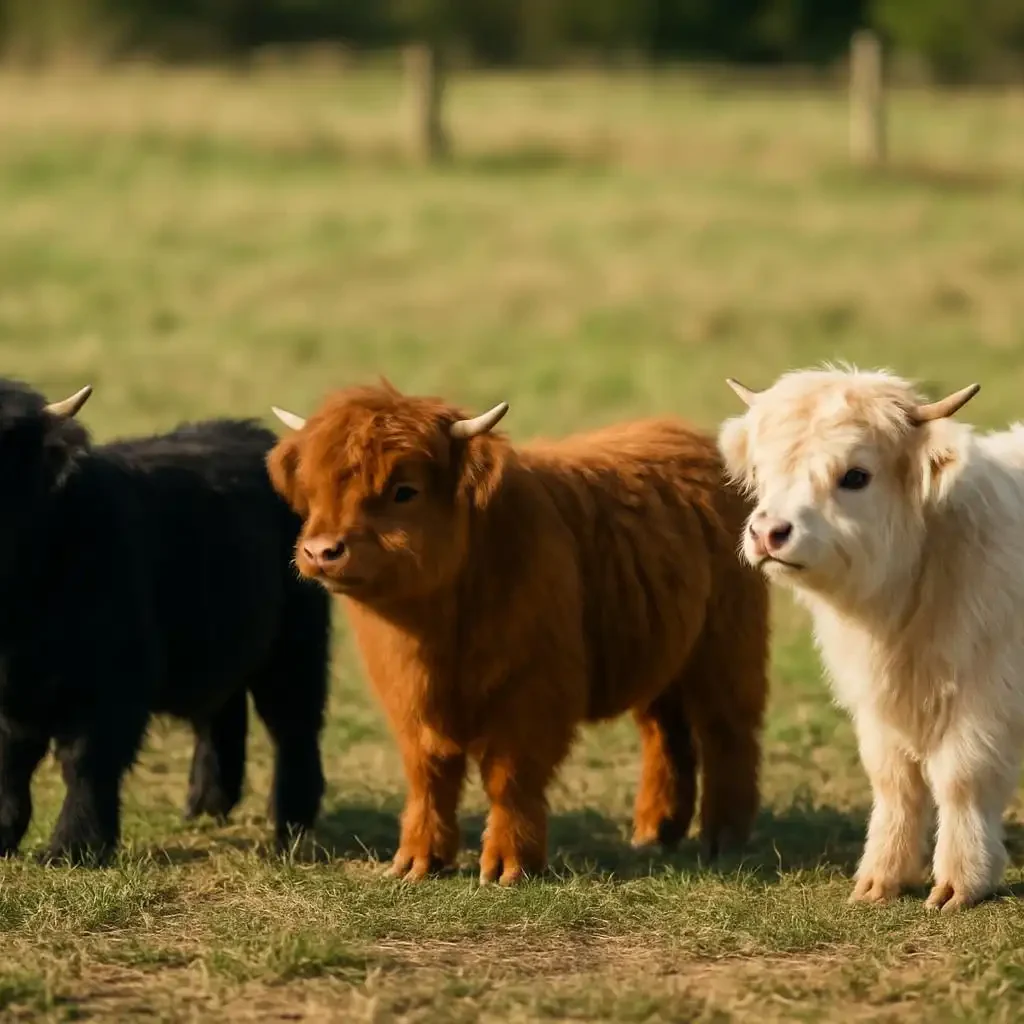
The coat’s length and density vary seasonally, with the animals typically shedding their winter coat in spring. This natural adaptation allows them to thrive in diverse climates across the United States, from the cold northern states to the warmer southern regions.
Horn Characteristics
Both male and female teacup mini highland cows typically have horns, which serve as one of their most distinctive features. These horns:
- Grow outward and slightly upward from the head
- Can reach 12-24 inches in length (smaller than standard Highland’s 36+ inches)
- Are typically wide-set with a graceful curve
- Feature a light color with dark tips
While the horns contribute significantly to the breed’s aesthetic appeal, they also require owners to provide adequate space and appropriate handling techniques to ensure safety.
Temperament and Personality Traits
Teacup mini highland cows are renowned for their gentle disposition and friendly nature, making them popular not just as livestock but as companion animals for many US owners.
Social Behavior Patterns
These animals are naturally social and thrive in small herds. Their behavioral characteristics include:
- Strong herd instincts with established social hierarchies
- Close bonds with herd members and caretakers
- Preference for companionship (keeping at least two is recommended)
- Calm and non-aggressive temperament when properly socialized
Picture Perfect Ranch in Ohio notes that “Mini Highland cows are extremely friendly and social animals. They thrive in herds, which means having more than one is often recommended.”
Interaction with Humans and Other Animals
When properly raised and socialized, teacup mini highland cows typically display:
- Natural curiosity toward humans
- Enjoyment of gentle scratching and brushing
- Good behavior around children when supervised
- Tolerance of other farm animals including goats, sheep, and chickens
- Responsiveness to consistent handling and training
Their intelligence and trainability make them suitable for small-scale farming operations where regular human interaction is part of daily management. Many US owners report that their mini highland cows recognize their names and come when called, similar to the behavior of large dogs.
Emotional Needs
Despite their hardy nature, teacup mini highland cows have distinct emotional requirements:
- Regular social interaction with their own kind
- Consistent human handling from an early age
- Environmental enrichment through varied terrain and natural foraging
- Protection from extreme stress factors
- Stable routines and familiar surroundings
Meeting these emotional needs contributes significantly to the overall health and well-being of these animals, resulting in better temperament and easier management for US owners.
Benefits of Owning a Teacup Mini Highland Cow
For US landowners with suitable space, teacup mini highland cows offer several advantages over standard cattle breeds. Understanding these benefits helps potential owners determine if these animals align with their goals and lifestyle.
Companionship Aspects
Many US owners choose teacup mini highland cows primarily for their companionship value:
- Their friendly, docile nature makes them enjoyable to interact with
- Their distinctive appearance creates a unique farm aesthetic
- Their long lifespan (15-20 years with proper care) allows for long-term bonding
- Their intelligence and trainability enable meaningful human-animal relationships
Land Efficiency Compared to Standard Cattle
While claims about land requirements can sometimes be exaggerated, teacup mini highland cows do offer some space advantages:
- Require approximately 0.5-1 acre per animal (compared to 1-2 acres for standard cattle)
- Create less soil compaction due to lower weight
- Can thrive on marginal pasture that might not support larger breeds
- Adapt well to rotational grazing systems on smaller properties
Milk Production Capabilities
Though not primarily dairy animals, teacup mini highland cows can produce milk for family use:
- Average production: 1-2 gallons daily during lactation
- Higher butterfat content (5-6%) than commercial dairy breeds
- Rich, creamy flavor ideal for artisanal cheese and butter
- Suitable for small-scale, non-commercial dairy operations
It’s important to note that consistent milk production requires regular breeding and proper management of cow-calf pairs.
Environmental Benefits
Teacup mini highland cows can contribute positively to land management:
- Efficient grazers that help control invasive plant species
- Lower methane production compared to larger cattle breeds
- Reduced feed requirements and smaller environmental footprint
- Ability to improve soil health through proper rotational grazing
These environmental advantages align well with the growing interest in sustainable and regenerative agriculture practices among US landowners.
Essential Care Guide for Owner guide about teacup mini highland cowsr Teacup Mini Highland Cows
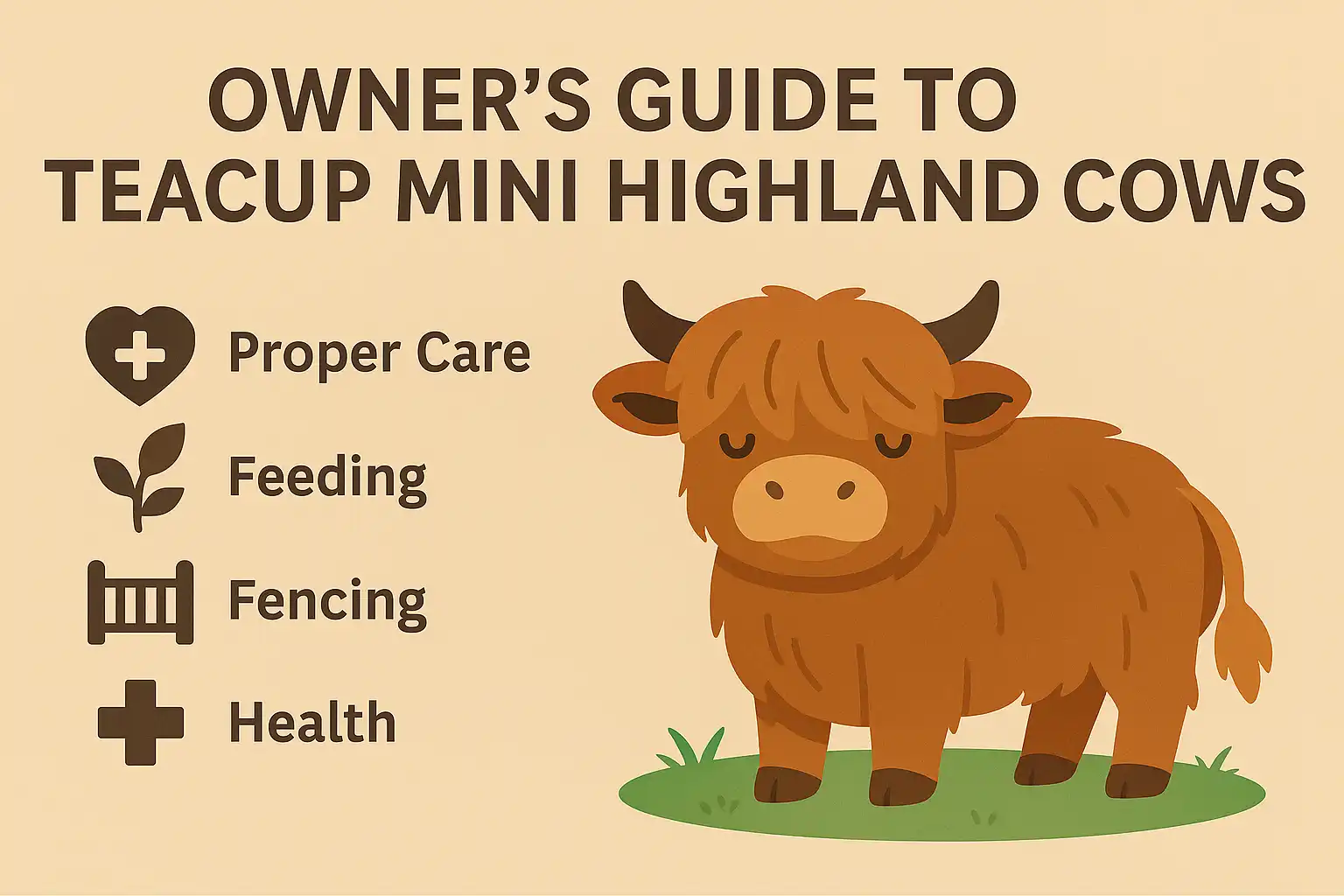
Providing proper care for teacup mini highland cows ensures their health, longevity, and productivity.
Nutritional Requirements
Teacup mini highland cows have specific dietary needs that vary by season, age, and reproductive status:
| Season | Primary Feed | Supplements | Water Requirements |
|---|---|---|---|
| Spring | Fresh pasture grass | Mineral block, salt | 8-12 gallons daily |
| Summer | Pasture grass, shade access | Salt block, fly control | 12-15 gallons daily |
| Fall | Pasture grass, hay introduction | Mineral supplements | 8-12 gallons daily |
| Winter | Quality hay (20-25 lbs daily) | Protein supplements, minerals | 6-10 gallons daily (heated) |
Key nutritional considerations include:
- Access to clean, fresh water at all times
- High-quality forage as the foundation of their diet
- Mineral supplementation to address regional soil deficiencies
- Limited grain feeding to prevent obesity and related health issues
- Adjustments for pregnant or lactating cows
Housing and Shelter Needs
While teacup mini highland cows are hardy and well-adapted to various climates, they still require appropriate shelter:
- Three-sided shelter providing protection from prevailing winds
- Minimum 50-60 square feet of covered space per animal
- Dry bedding area with good drainage
- Shade provision during hot weather
- Protection from extreme elements
Their thick double coat provides excellent insulation in cold weather, but shade and ventilation are crucial during hot US summers, particularly in southern states.
Grooming Necessities
The distinctive coat of teacup mini highland cows requires some maintenance:
- Regular brushing (1-2 times weekly) to remove debris and check for parasites
- Seasonal assistance with shedding their winter coat
- Occasional trimming around eyes if vision is impaired
- Hoof checking and trimming every 6-8 weeks
- Horn maintenance and safety checks
Many US owners report that grooming sessions strengthen the bond between animal and caretaker while providing opportunities to monitor overall health.
Health Monitoring
Preventative healthcare is essential for teacup mini highland cows:
- Regular veterinary check-ups (at least annually)
- Vaccination protocol appropriate for your region
- Parasite control program (internal and external)
- Prompt attention to any changes in behavior or appetite
- Reproductive health monitoring
Establishing a relationship with a large animal veterinarian experienced with cattle is crucial for US owners, as specialized care may be required for these unique animals.
Land Requirements and Setup for Owners
Creating an appropriate environment for teacup mini highland cows requires careful planning and infrastructure development tailored to both the animals’ needs and regional considerations.
Acreage Recommendations
While teacup mini highland cows require less space than their standard-sized counterparts, adequate land is still essential:
- Minimum recommendation: 0.5-1 acre per cow for grazing
- Optimal setup: 1-2 acres per cow with rotational grazing
- Additional space for shelter, handling facilities, and buffer zones
The carrying capacity of land varies significantly based on soil quality, rainfall, and vegetation type across different US regions. Working with local agricultural extension offices can help determine appropriate stocking rates for specific properties.
Fencing Specifications
Proper fencing is crucial for containing teacup mini highland cows safely:
- Fence height: Minimum 48 inches
- Recommended types: Woven wire, high-tensile electric, or sturdy wooden fencing
- Post spacing: 8-10 feet maximum
- Gates: Secure latches and appropriate width for equipment access
- Special considerations: Reinforced corners and protection from predators
While teacup mini highland cows are not typically fence-challengers, sturdy fencing prevents unwanted escapes and protects the animals from predators and neighboring livestock.
Shelter Design Considerations
Effective shelter design addresses both animal welfare and management efficiency:
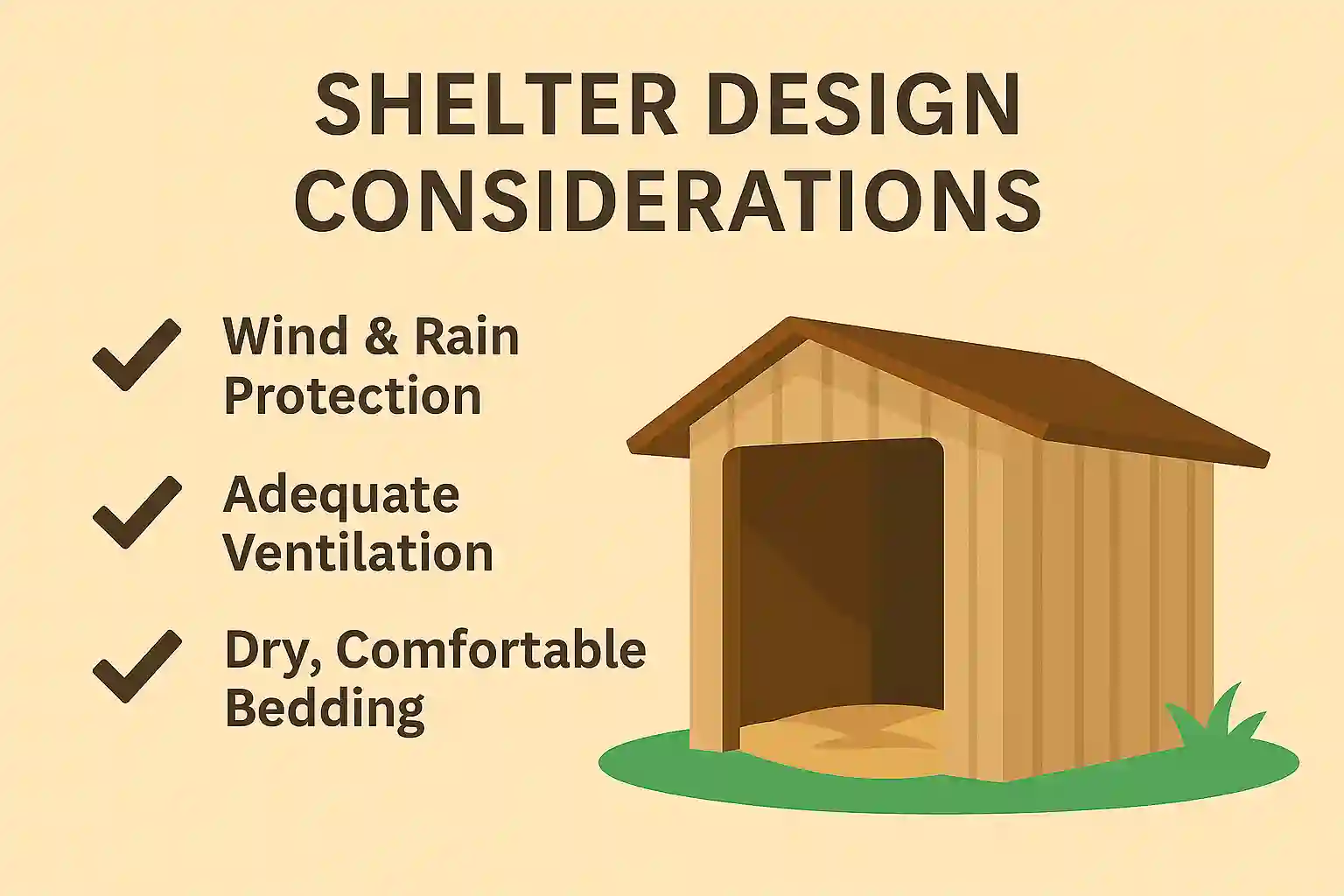
- Orientation: Open side facing away from prevailing winter winds
- Roof height: Minimum 6 feet to accommodate horns
- Flooring: Well-drained natural ground or packed gravel with bedding
- Access: Wide doorways to prevent horn injuries
- Maintenance: Easy cleaning and bedding replacement
Many owners find that simple pole barn structures or modified run-in sheds work well for teacup mini highland cows, providing necessary protection without excessive cost.
Regional Climate Adaptations
Adaptations for different US climate zones ensure animal comfort and health:
| Climate Zone | Summer Adaptations | Winter Adaptations |
|---|---|---|
| Northern/Cold | Shade provision, ventilation | Windbreaks, deep bedding, heated water |
| Temperate | Shade, ventilation, cooling mist | Basic shelter, unfrozen water access |
| Southern/Hot | Extensive shade, cooling systems, water misters | Minimal winter adaptations needed |
| Arid/Dry | Shade, dust control, ample water | Protection from temperature swings |
| Humid | Ventilation, pest control, mud management | Dry shelter with good drainage |
Understanding and adapting to regional climate challenges helps US owners provide appropriate care throughout the year, maximizing animal comfort and minimizing health issues.
Legal Considerations for Teacup Mini Cow Owners
Navigating the legal landscape is an essential aspect of responsible teacup mini highland cow ownership in the United States. Requirements vary significantly by location and understanding local regulations prevents costly mistakes.
Zoning Regulations by Region
Zoning laws determine whether livestock can be legally kept on a property:
- Urban areas: Often prohibit livestock or require special permits
- Suburban areas: May allow livestock with minimum acreage requirements
- Rural residential: Typically allows livestock with some restrictions
- Agricultural zones: Few restrictions on livestock keeping
Many US municipalities classify cattle of all sizes as “livestock” or “farm animals” regardless of their size or purpose, making it essential to check local ordinances before purchase.
Agricultural Permits
Depending on location and scale, various permits may be required:
- Livestock keeping permits
- Water usage permits for agricultural purposes
- Manure management plans
- Brand registration in applicable states
- Transport permits for moving animals between properties or states
The USDA and state departments of agriculture provide resources for understanding permit requirements specific to each region.
Veterinary Requirements
Legal obligations regarding animal health include:
- Compliance with state vaccination requirements
- Adherence to testing protocols for interstate transport
- Proper disposal of deceased animals
- Reporting of certain diseases to state authorities
- Maintaining health records for inspection
Working with a veterinarian familiar with both local regulations and cattle health ensures compliance with all legal requirements.
Transportation Regulations
Moving teacup mini highland cows requires adherence to specific rules:
- Appropriate trailers with adequate ventilation and footing
- Health certificates for interstate transport
- Compliance with hours-of-service regulations for long distances
- Registration with state livestock boards when crossing state lines
- Adherence to animal welfare standards during transport
Understanding these regulations prevents legal complications when purchasing, selling, or relocating animals across the United States.
Cost Analysis: Investment in Teacup Mini Highland Cows
For potential US owners, understanding the financial aspects of teacup mini highland cow ownership is crucial for proper planning and budgeting.
Purchase Price Ranges
Initial acquisition costs vary based on several factors:
- Registered vs. unregistered: $1,800-$8,000+
- Age: Calves ($1,800-$3,500), Yearlings ($2,500-$5,000), Mature cows ($3,500-$8,000+)
- Gender: Females typically command higher prices than steers
- Coloration: Rare colors may increase price
- Breeding potential: Proven breeders with good genetics command premium prices
- Region: Prices vary by location and availability
It’s important to note that unusually low prices may indicate health issues, misrepresentation of age, or crossbreeding rather than true miniature highland genetics.
Ongoing Maintenance Costs
Annual expenses for maintaining a teacup mini highland cow include:
| Expense Category | Estimated Annual Cost (USD) | Notes |
|---|---|---|
| Feed (hay, supplements) | $600-$1,200 | Varies by region and quality |
| Veterinary care | $200-$500 | Routine care and vaccinations |
| Fencing maintenance | $100-$300 | Repairs and upgrades |
| Bedding | $150-$300 | Straw, wood shavings, etc. |
| Equipment | $100-$250 | Halters, grooming tools, etc. |
| Water | $50-$200 | Depends on source and system |
| Insurance (optional) | $150-$400 | Liability and mortality coverage |
| Total Annual Cost | $1,350-$3,150 | Per animal |
These estimates help US owners budget appropriately for the lifetime care of their animals, which can span 15-20 years.
Return on Investment Possibilities
For those considering teacup mini highland cows as more than pets, potential returns include:
- Breeding: Selling calves ($1,800-$3,500 per calf)
- Fiber: Processing and selling their wool/hair
- Agritourism: Farm visits and educational programs
- Small-scale dairy: Artisanal cheese and butter production
- Land management: Reduced mowing and invasive species control
While returns rarely offset the full cost of ownership, these opportunities can help mitigate expenses while providing additional benefits.
Comparison with Other Livestock Investments
Understanding how teacup mini highland cows compare financially to other livestock options helps with decision-making:
| Livestock Type | Initial Investment | Annual Maintenance | Potential Returns | Space Required |
|---|---|---|---|---|
| Teacup Mini Highland | $2,500-$8,000 | $1,350-$3,150 | Moderate | 0.5-1 acre |
| Standard Cattle | $1,200-$3,000 | $800-$2,000 | Higher | 1-2 acres |
| Goats | $200-$800 | $500-$1,000 | Low-Moderate | 0.2-0.5 acre |
| Sheep | $200-$800 | $500-$1,000 | Low-Moderate | 0.2-0.5 acre |
| Alpacas | $1,000-$5,000 | $500-$1,500 | Low-Moderate | 0.2-0.5 acre |
This comparison illustrates that teacup mini highland cows typically represent a higher investment than other small livestock options, with returns more focused on enjoyment and companionship than economic gain for most US owners.
Finding Reputable Teacup Mini Highland Cow Breeders
Locating ethical breeders is perhaps the most crucial step in becoming a teacup mini highland cow owner. This section provides guidance for US buyers seeking reputable sources.
Red Flags to Watch For
When researching breeders, be alert for these warning signs:
- Reluctance to show the parents or the breeding facility
- Unwillingness to provide health records or genetic testing results
- Extremely low prices compared to market averages
- Claims that seem too good to be true (e.g., “apartment-friendly” or “dog-sized”)
- Pressure tactics or urgency to complete the sale
- Lack of knowledge about proper care requirements
- No follow-up support after purchase
Conclusion
Teacup mini highland cows represent a unique opportunity for US landowners to experience the joy of raising cattle on a smaller, more manageable scale. Their distinctive appearance, friendly temperament, and adaptability make them appealing to a wide range of enthusiasts, from hobby farmers to homesteaders.
However, potential owners must approach this investment with realistic expectations and thorough preparation. Understanding the true nature of these animals—including their actual size requirements, care needs, and associated costs is essential for successful ownership.
By working with reputable breeders, creating appropriate environments, and providing consistent care, US owners can enjoy the many benefits these charming animals offer.
With proper research, preparation, and ongoing commitment to their welfare, these distinctive animals can thrive under your care for many years to come.

